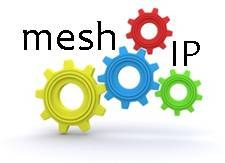 SMBs looking at cloud computing – don’t overlook hosted and managed services
SMBs looking at cloud computing – don’t overlook hosted and managed services
Almost every child has looked at a cloud and said, “That cloud looks like a _____.” The filled-in blank often becomes the point of highly subjective argument. In much the same way, IT professionals continuously seek to fill in the blank with an understanding of “cloud computing” and we’ve learned that what you see in your cloud has a lot to do with what’s important to your company. However, the general concept of “the cloud” does not have to lack a defined shape or be complicated.
Simply put, cloud computing is a dynamically scalable set of computing resources available from outside your network. It is a virtualized computing environment in the broadest sense of the term, “virtual.” It often includes online applications from a service provider, but can also include hosted and managed infrastructure services, which are an often-overlooked but viable option for many SMBs.
Much of the discussion around cloud computing is appropriately focused on accessing sophisticated applications (e.g. CRM) that can be prohibitively costly for a small or mid-sized business to either develop and manage itself or to purchase and customize. But consider your company’s non-proprietary infrastructure as well. After all, every IT manager would prefer to tackle strategic, high-value computing issues, so look to a partner for assistance with your core infrastructure and platforms, such as:
* Microsoft Exchange service and capacity
* Cisco network infrastructure
* Voice/data platforms
* Storage
Small and medium-sized businesses (SMBs) typically cite purchase and transition costs as the main deterrent to adopting a new technology, but that is precisely the attractiveness of moving your infrastructure to the cloud. You can realize several immediate business benefits:
1. Your CFO will approve: You’ll convert what has previously been a capital investment into an operating expense. For your finance department these recognizable benefits include simpler accounting, more accurate matching of current cash flow with actual use and life of the computing resource, and freed investment capital for other organizational uses.
2. You’ll alleviate some headaches: Infrastructure operates 24/7, and internal staffing necessary to support it means added cost and the nagging headaches of dealing with on-call-overnight coverage. The staffing challenges are two-fold; not only do you need to find qualified staff, you need to keep them happy and, in the ultra-competitive market for IT experts, this can be easier said than done. In addition to finding the staff, you need somewhere to house them and with that comes the expense of a dedicated on-site or remote facility. Put your infrastructure in the cloud, and those headaches dissipate.
3. Your users will approve: Basic infrastructure upgrades often consume entire SMB IT staffs, competing with and impeding the other vital support services they provide users. Moving those infrastructure components to the cloud avoids the disruptions that system-wide upgrades can cause.
Cloud or Bust?
Do you need to make a headlong leap into the cloud? No. In fact, this very notion contributes to the technology adoption deterrence discussed earlier. There are strategies available to get your feet wet before making the dive. For instance, you can easily move your less critical items to a “public cloud” – over the Internet – and you may do so one application or service at a time. With more care and thought, you can just as easily move more critical items to a “private cloud” – a hosted or managed approach – that is more secured and appropriate for company-confidential or sensitive data and functions. You can also employ a hybrid approach and dip into both pots if you wish.
The beauty and simplicity of the cloud allows you to pick and choose a solution that works best for your SMB by presenting a vantage point from which you can identify the “best of breed” solutions for multiple areas of your infrastructure rather than going with a monolithic solution from one vendor.
Pursuing infrastructure in the cloud puts your organization in good company. Consider a couple of concrete examples – companies that we know who have each forged their own path into the cloud and realized substantial benefits from doing so:
Cloud-based website infrastructure
Industry: Electric power utility
Challenge: Needed to update to new eCommerce site while existing site stayed live
Solution: Adopted utility computing infrastructure (Hosted Enterprise Infrastructure) in multiple data centers to quickly roll out new web site and add enhanced disaster recovery capabilities
Benefits: Reduced capital costs, capacity on demand, enhanced hardware failure recovery
Cloud-based email marketing response infrastructure
Industry: Marketing agency
Challenge: Needed short-term (3 month) server capacity for marketing promotion
Solution: Added utility computing infrastructure (Hosted Enterprise Infrastructure) to existing dedicated infrastructure to handle campaign overflow traffic
Benefits: Reduced capital costs, capacity on demand, overall cost savings
- The Customer Edge Drives the Need for NaaS - June 25, 2023
- Blockchain Evolves And Secures - January 13, 2019
- Bessemer Ventures’ 2018 Cloud Computing Trends - February 25, 2018




